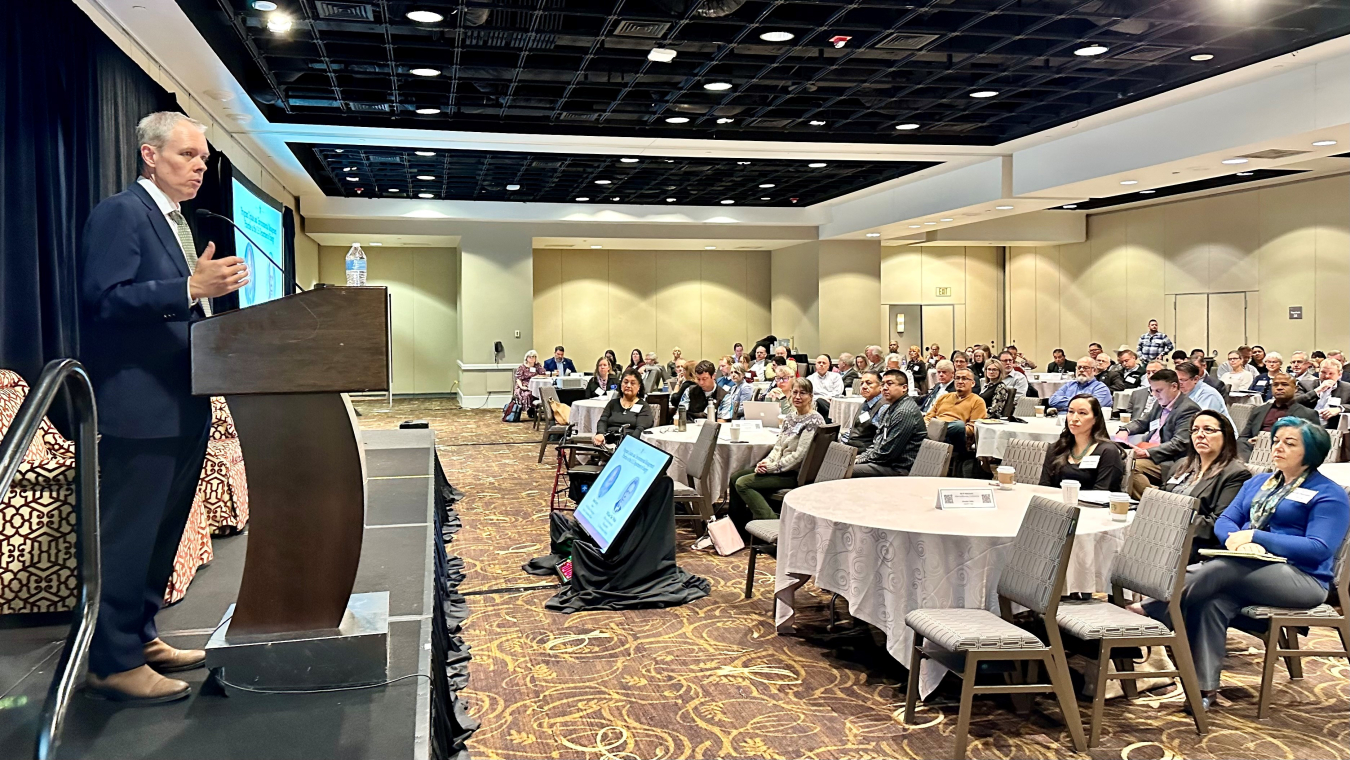The 21st Annual Intergovernmental Meeting with the U.S. Department of Energy on Nuclear Waste Cleanup last week brought together EM and six intergovernmental groups to discuss priorities and strategies to advance the cleanup mission.
Office of Environmental Management
December 6, 2022
NEW ORLEANS - The 21st Annual Intergovernmental Meeting with the U.S. Department of Energy on Nuclear Waste Cleanup last week brought together EM and six intergovernmental groups to discuss priorities and strategies to advance the cleanup mission.
DOE and EM senior leaders gave updates on navigating the future of the waste management consent-based siting process, planning for the future workforce, climate resiliency preparations, protection of cultural and historical landscapes and an emerging contaminant migrating into the environment from chemicals used in all types of materials called per- and polyfluoroalkyl substances (PFAS). Attendees also participated in an interactive budget development exercise.
In his plenary address, EM Senior Advisor William “Ike” White reflected on a successful past year that saw the cleanup program achieve the bulk of its ambitious calendar year priorities, from the launch on the Main Plant Process Building demolition at the West Valley Demonstration Project to the startup of the Hanford Site’s Tank-Side Cesium Removal System, the cornerstone of the site’s Direct-Feed Low-Activity Waste Program, removing radioactive cesium and solids from tank waste.
“With a budget of over $7 billion, a top-notch workforce and strong state, tribal, community and regulator partners, EM has been able to achieve the vast majority of 2022 priorities,” White said. “EM is delivering results that lead to safer and cleaner sites. These collective successes put us on a positive path forward for the next decade and beyond.”
Faced with an aging workforce and looming retirements, EM leadership, tribes and local communities are working to ensure a new generation is ready to carry forward the cleanup mission.
White said that EM is identifying ways to retain and develop the workforce already in place and recruit the next generation.
“We’re exploring options that could allow for expedited hiring of new employees to get qualified people on the job sooner,” White said. “EM recently expanded the Minority Serving Institutions Partnership Program. We are increasing internships, developing technology curriculum and boosting research activities in order to attract new talent.”
Looking to the future, White discussed planning tools to evaluate opportunities to overcome remaining challenges and achieve more in coming decades. They include the new EM Program Plan laying out a decision roadmap to serve as a guide over the next two decades, a calendar year priority list to focus on near-term progress and a strategic vision that provides an outline that guides EM priorities over the next decade.
It was the first in-person Intergovernmental Meeting in three years due to the COVID-19 pandemic. The National Governors Association Center for Best Practices hosted the event.
To receive the latest news and updates about the Office of Environmental Management, submit your e-mail address.

